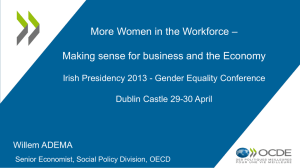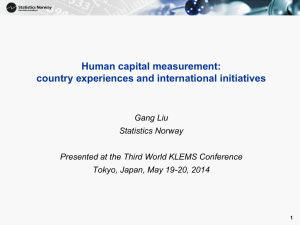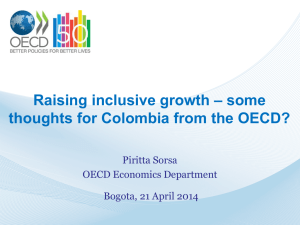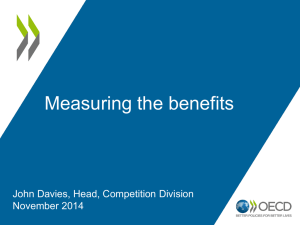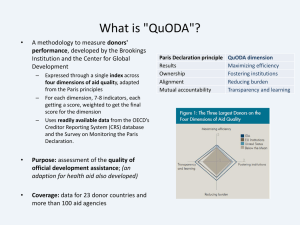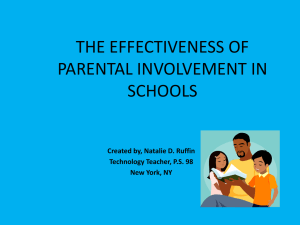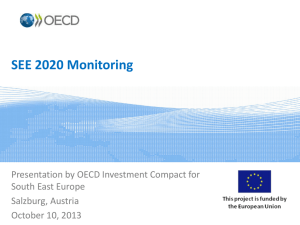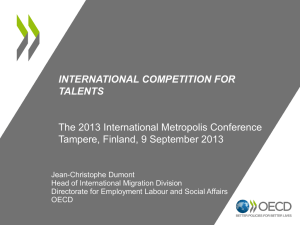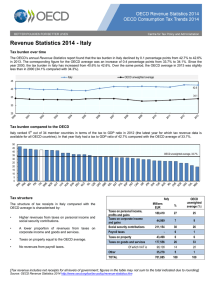OECD GENDER INITIATIVE: Gender equality in Education
advertisement
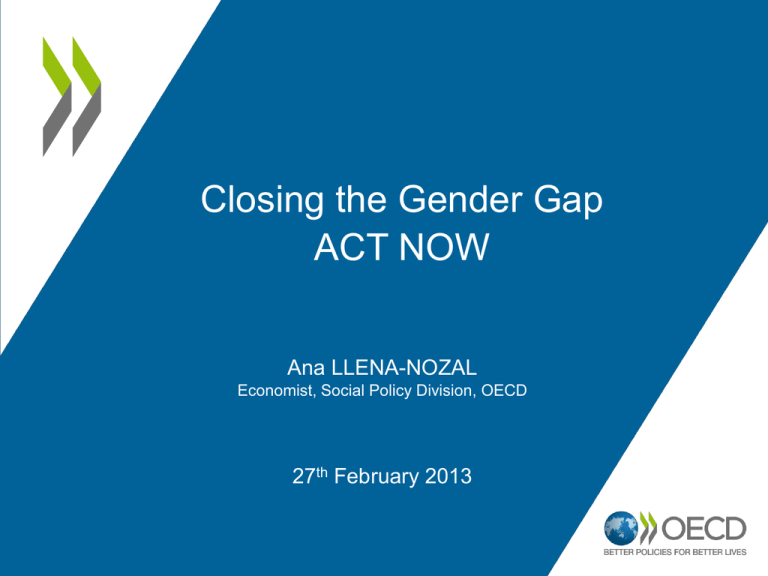
Closing the Gender Gap ACT NOW Ana LLENA-NOZAL Economist, Social Policy Division, OECD 27th February 2013 OUTLINE • The economic costs of gender inequality • Policies to promote gender equality In labour force participation gender gaps persist Gender gap in labour force participation (male rates minus female rates), population aged 15-64 2010 2000 1990 1980 Percentage points 60 50 40 30 20 10 0 Source: OECD (2008), Growing Unequal? 12.0 14.0 Even larger gaps persist in other employment outcomes: prevalence of part-time… Percentage of men and women in part-time employment, 2010 Men Women Percentage points 70 60 50 40 30 20 10 0 7.3 8.2 … career progression in the private sector… Women’s shares in the labour force and senior management, 2010 % Senior manager share Labour force share 60 50 40 31.6 30 20 10 0 32.0 Gaps in employment outcomes are reflected in the gender pay gap… Gender pay gap for full-time workers The gender pay gap increases with age and during childbearing… Gender pay gap by presence of children, 25-44 years old Differences in take-home pay are even larger because women work fewer hours… Gender pay gap for full-time and all workers (part-time and full-time) % 50 45 40 35 30 25 20 15 10 5 0 Full-time workers All workers And pay gap contributes to lower pensions Gender pension gap, mandatory schemes, selected OECD countries, 2009 2. Policy considerations Policy levers • • • • • Gender equality policies. Family policies Tax/benefit policies Monitoring Cooperate with developing and emerging countries to address the gender dimensions of poverty through women’s economic empowerment Provide paid employment-protected parental leave and promote more equal use among parents • Provide paid parental leave. Evidence suggests that : – – • extending parental leave entitlements had a small positive effect on the female-to-male employment ratio but only up to two years of leave; a longer leave has a negative effect on both the female employment rate; extending paid parental leave had a small positive effect on weekly working hours among women but it was associated with an increase in the gender pay gap among full-time workers; Encourage fathers to take available parental leave, also by reserving part of the parental leave entitlement for the exclusive and non-transferable use by fathers. Paid parental leave (supplementary to paid maternity leave), 2008 Gender pay gap age 30-34 % 30 R² = 0.604 SVK AUT JPN 25 CZE 20 15 FIN CAN KOR DEU USA AUS DNK NOR GBR IRL 10 BEL 5 NZL 0 0 50 100 150 Number of paid weeks of parental leave 200 Invest in childcare The OECD gender report shows that: • Higher enrolment in formal childcare increases female employment on a full-time and part-time basis, and reduces pay gaps. Gender pay gaps and enrolment rates in formal childcare 2008 Gender pay gap age 30-34 % 30 SVK JPN AUT 25 CZE FIN 20 DEU 15 CAN KOR USA AUS IRL 10 R² = 0.564 GBR NZL NOR DNK BEL 5 0 0 80 60 40 20 Enrolment rates of children in formal care, 2008 % Sources: OECD Family database (www,oecd.org/els/family/database) and OECD Earnings database. Increase the representation of women in decision-making positions Tools: corporate governance codes, target- Share of women on boards in listed companies, 2009 setting for leadership positions, disclosure and monitoring of progress in both public and private sectors; Some countries have introduced quotas for women in executive and supervisory boards of listed and public companies; campaigning and raising awareness to encourage greater participation and representation of women in politics. Source: OECD (2012), Closing the Gender Gap Act Now. (www.oecd.org/gender) THANK YOU and FURTHER READING! “Closing the Gender Gap: Act Now” (17 December 2012 at www.oecd.org/gender)



